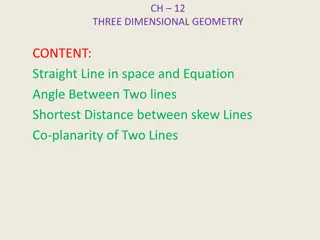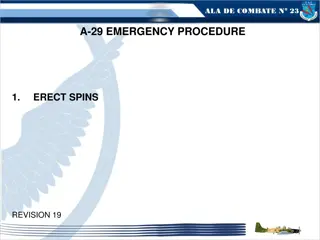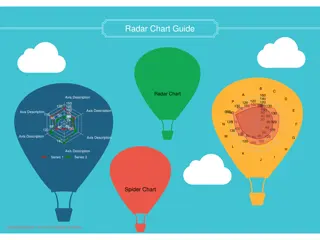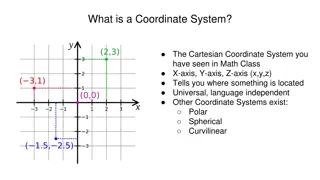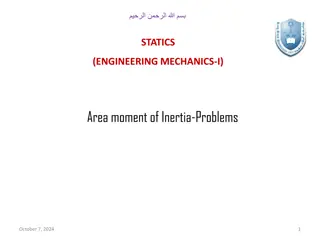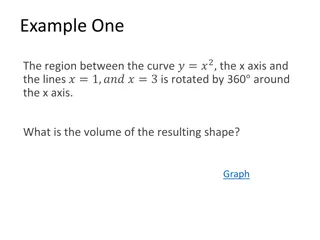Versatile Axes: Essential Tools for Outdoor Resilience
Axes can come in handy at times when you don\u2019t even expect it. We, at Survival Supplies Australia, understand this and want to help you be ready for any adventure or survival response situation. We bring you an extensive selection of axes tailored for various needs, ranging from the versatile c
3 views • 1 slides
Top Tomahawks for Camping and Tactical Applications
Experience the best tomahawks that combine durability, functionality, and affordability. At Survival Supplies Australia, we bring high-quality axes and tomahawks that enhance outdoor experiences while ensuring safety and reliability. Browse our selection from leading brands, such as Tops, CRKT, Cond
0 views • 1 slides
Axes
Axes can come in handy at times when you don\u2019t even expect it. We, at Survival Supplies Australia, understand this and want to help you be ready for any adventure or survival response situation. We bring you an extensive selection of axes tailored for various needs, ranging from the versatile c
1 views • 1 slides
Biomechanics in Physical Education: Movement Analysis Overview
Biomechanics plays a crucial role in understanding movement and technique in physical education. This resource focuses on topics such as muscular contractions, lever systems, planes and axes of movement, and sports technology. It helps sports performers and coaches analyze movements for performance
2 views • 50 slides
Block Graphs: Examples and Explanations
A block graph visually represents discrete data in a collection of blocks with no gaps between them. Each block must be carefully drawn with a title and axes labeled to explain the data shown. Examples include surveys on favorite activities, zoo animal sightings, and chocolate wrapper colors. Learn
0 views • 8 slides
Bivariate Normal Data Analysis: LPGA 2008 Season Overview
Explore the analysis of bivariate normal data focusing on LPGA driving distance and fairway percent from the 2008 season. Learn how to compute confidence ellipses, estimated means, variance-covariance matrix, eigenvalues, eigenvectors, and plot insightful visualizations. Understand the method, set u
1 views • 8 slides
Coordinate Geometry in Mathematics
Coordinate geometry, a system developed in 1637 by Descartes and Fermat, allows for locating points in a Cartesian plane using x and y coordinates. This concept involves recalling coordinate axes, plotting points, understanding quadrants, and solving real-life problems. The history, introduction, an
3 views • 27 slides
Three-Dimensional Geometry: Direction Cosines and Angles
Understanding direction cosines and angles in three-dimensional geometry is crucial for determining the orientation of lines in space. By calculating direction cosines, we can find the angles a line makes with the positive directions of the X, Y, and Z axes. This knowledge helps in various geometric
2 views • 18 slides
Structural Engineering Solutions: Moments, Stresses, and Centroids
An in-depth analysis of structural engineering problems involving centroids, moments of inertia, maximum stresses, and curvature calculations. Solutions are provided for scenarios such as the application of couples to machine parts and wooden beams, determining maximum tensile and compressive stress
0 views • 12 slides
Interactive Mathematics Activities for Year 7: Plotting Coordinates and More
Engage in a series of nine checkpoint activities focusing on plotting coordinates, including scenarios like ant movements, pirate treasure hunts, high and low points, and understanding coordinate axes. Dive into fun challenges and develop key skills in mathematics while exploring various coordinate
0 views • 29 slides
CNC Machines: Features, Tooling, and Operations
CNC (Computer Numerical Control) machines are capable of positioning tools without human intervention. They rely on an interpreter to translate instructions into electronic signals. The machines can be classified based on the number of axes, tools used, control system, and motion system. Different t
0 views • 30 slides
PHITS Multi-Purpose Particle and Heavy Ion Transport Code System Functions
The PHITS Multi-Purpose Particle and Heavy Ion Transport code system offers useful functions for manipulating spatial coordinates, rotations, and translations. Users can define transformations, such as rotations around different axes and translations along specified directions. The system allows for
1 views • 48 slides
Aircraft Stability and Manoeuvrability
Exploring the principles of flight, this content covers how the stability of an airplane is maintained, the forces involved in aircraft motion, and stability objectives related to different axes of rotation and planes of movement. It also delves into the effects of dihedral and anhedral on stability
1 views • 45 slides
A-29 Emergency Procedure - Erect Spins Revision 19
Recognize an erect spin as an oscillatory movement about the three aircraft axes with high and low speed AOA. Follow the Corrective Action Procedures (C.A.P.) of throttle idle, full opposite rudder direction, and stick neutral. When the spins stop, maintain rudder neutral, adjust throttle and stick
0 views • 4 slides
Complete Guide to Radar Charts: Benefits, Drawbacks, and Tips
Radar charts, also known as spider charts, offer a graphical way to compare data in a web-like form, making it easy to evaluate multiple alternatives based on various criteria. While radar charts have benefits like highlighting strengths and deficiencies clearly, they also come with drawbacks such a
1 views • 12 slides
Optical Alignment Using Beam Triangle Opti 521 Phil Scott
This presentation delves into the intricate process of optical alignment using a beam triangle, focusing on defining optical and mechanical axes, addressing alignment challenges, degrees of freedom for various elements, and the importance of setting up a beam triangle for accurate alignment. The con
0 views • 14 slides
Leading Axis Theory and Practice in Array Kingdom 2023
Exploring the concept of Leading Axis Theory and Practice in the Array Kingdom of Elsinore 2023. The discussion covers essential keys like Rank and Dyadic Transpose, Make Functions apply to whole arrays, and Theory Arrays of various ranks. The images provide insights into major cells, leading axes,
0 views • 32 slides
Topological Quintessence: Anomalous Cosmic Anisotropies and Dark Flow Directions
The consistency of Cold Dark Matter (CDM) with observational data has improved over the past decade, but tensions remain with various cosmic anomalies such as preferred anisotropy axes and dark flow directions. Topological Quintessence, a physical mechanism proposed by L. Perivolaropoulos and collab
0 views • 26 slides
Crystal Geometry Systems and Symmetry Elements
Crystal geometry involves the study of seven crystal systems defined by three symmetry elements - centre of symmetry, planes of symmetry, and axes of symmetry. These symmetry elements play crucial roles in determining the geometric properties of crystals. The centre of symmetry, plane of symmetry, a
1 views • 12 slides
Coordinate Systems in Mathematics and Astronomy
Coordinate systems such as Cartesian, Polar, and Celestial serve as frameworks for locating points in space. They include dimensions like x, y, z axes in Cartesian, Latitude and Longitude on Earth, and various systems for astronomical observations. Different coordinate systems cater to specific purp
0 views • 11 slides
Creating Bar Charts from Data: A Visual Guide
Learn how to gather data, create tables, and construct bar charts step-by-step. Understand the key components of a bar chart like title, scale, axes, categories, and labels. Practice with engaging activities involving Smarties and pizza toppings to enhance your chart-making skills.
0 views • 17 slides
Visual Guide to Drawing Line Graphs with Data
Learn how to create line graphs step by step using provided data sets, including temperature over time and weight loss on a diet. Understand the process of plotting points, connecting them, adding axes labels, and scaling for accurate representation. Follow along with detailed instructions and visua
0 views • 4 slides
Consensus Relevance with Topic and Worker Models
Study focuses on recovering actual relevance of a topic-document pair using noisy predictions from multiple labelers. Various supervised, semi-supervised, and unsupervised approaches are explored. The goal is to obtain a more reliable signal from the crowd or benefit from scale through expert qualit
0 views • 15 slides
Mastering Graph Axes Customization: Techniques and Tricks
Explore advanced techniques for customizing graph axes by adjusting scales, labels, and ticks. Learn how to suppress ticks, modify label alignment, and work with non-standard scales like logarithmic or reciprocal. Discover ways to maintain consistent styles across a series of graphs and gain more co
0 views • 57 slides
4th People's Health Assembly: Strengthening Global Health Movement
The 4th People's Health Assembly (PHA4) held in Bangladesh in November 2018 aimed to strengthen solidarity, share experiences, and strategize future actions in global health. Discussions focused on various thematic axes such as political and economic landscapes, social determinants of health, and or
0 views • 9 slides
Sustainable Development Goals 6 & 13 Consultation for Amazon Basin Region in Guyana (October 2020)
This virtual meeting focused on the systematization of goal fulfillment for Sustainable Development Goals 6 and 13 in the Amazon basin region of Guyana in October 2020. The agenda included the formation of a national work team, assessing available information on SDG 6 and 13, and identifying informa
0 views • 26 slides
Cross-Border Project Funding Details in Belogradchik Region
The provided information outlines the allocated budget and specific objectives for various priority axes in a cross-border project focusing on enhancing regional connectivity, sustainability, safety, skill development, and cooperation capacity. The budget allocation includes soft and hard project ca
0 views • 21 slides
Overview of Classification of Psychiatric Disorders
Psychiatric disorders are illnesses with various manifestations that impact functioning due to disturbances in biological, social, genetic, and other factors. Two key classification systems, ICD-10 and DSM-5, categorize over 200 types of psychiatric illnesses. The ICD-10 includes categories like org
1 views • 18 slides
Monitoring & Evaluation Report to Plenary - Global Partners Meeting Rome, 23-24 May 2019
The monitoring and evaluation report focuses on enhancing FSC performance across its core functions, including food security response impact. Strategic axes include strengthening MEAL systems, accountability, and improving financial and programming tracking to address gaps. Capacity building, joint
0 views • 5 slides
Guidelines for Sketch Graphs in Higher Level Exams
A sketch graph in assessments like the PA report Revised Higher 2012 should not be rough or inaccurate but neat and correctly representing important values. Axes should be labeled with names and units, the origin should be marked, and important values linked with a dotted line. The graph line should
0 views • 15 slides
Sketching Graphs of Functions: Techniques and Examples
The art of sketching graphs of functions involves representing specific shapes and behaviors through labeled diagrams. This lesson highlights key details to keep in mind when sketching functions, such as labeling axes, maximum and minimum values, intercepts, symmetry, and asymptotes. Two examples of
0 views • 16 slides
Mathematics Unit 6 Reflections and Distance Activities
In this week's math lessons, students explored reflections of x and y axes using coordinate graphs and mathematical concepts. The agenda included warm-ups, video notes, reflection notes, and distance calculations between points on graphs. The week ended with a quiz on reflections and distances. The
0 views • 5 slides
Moment of Inertia Calculations in Engineering Mechanics - Problems and Solutions
The content covers problems related to calculating moments of inertia in engineering mechanics, specifically focusing on triangular areas, shaded areas, and circles. Detailed step-by-step solutions are provided for each problem, including determining moments of inertia about different axes and findi
0 views • 11 slides
Bar Graph Illustrations for Data Representation
Guide on creating bar graphs from provided datasets, including step-by-step instructions for visualizing average personal travel mileage in Wales 2009 and attendance at cultural events in Great Britain 2008-09. Learn how to identify the number of bars needed, set scales, label axes, arrange bars, an
0 views • 4 slides
Structural Parameters and Symmetry Operations of Organic Compounds
This document presents detailed structural parameters of various organic compounds along with their space groups, crystal systems, and symmetry operations including rotary inversion, screw axis, and glide plane. The data includes molecular formulas, molecular weights, unit cell dimensions, and refle
0 views • 7 slides
Spatial Visualization Techniques and Isometric Drawings
Explore spatial visualization concepts through activities like rotating shapes, connecting dots in isometric drawings, depicting 3D cubes, and creating coded plans for isometric views. Learn how to draw isometrically, define axes, and align paper for accurate representation. Develop skills in visual
0 views • 29 slides
CNC Rotary Axis Calibration: Enhance Accuracy
Achieve optimal precision with CNC Rotary Axis Calibration services. Our expert team uses advanced tools to ensure your rotary axes are perfectly aligned and calibrated, improving machining accuracy and performance. Minimize errors, reduce downtime,
1 views • 7 slides
Macromechanical Analysis of Lamina Failure Theory
The failure theories in macromechanical analysis are based on the normal and shear strengths of a unidirectional lamina, with five strength parameters. A lamina is considered failed if certain criteria related to ultimate strain values are violated. In a specific example with a Graphite/Epoxy lamina
1 views • 10 slides
Solving Physics Problems in Multibody Systems: Strategies and Motion Analysis
Understanding multibody systems in physics involves strategies like drawing free body diagrams, considering internal forces, and analyzing motion on inclines with rotated axes. By applying these methods, you can effectively solve problems involving forces, tensions, and accelerations in interconnect
0 views • 9 slides
Example One
examples and exercises involving rotational solids created by rotating regions around axes. Calculate volumes and areas of shapes defined by curves, lines, and axes in calculus.
0 views • 14 slides







